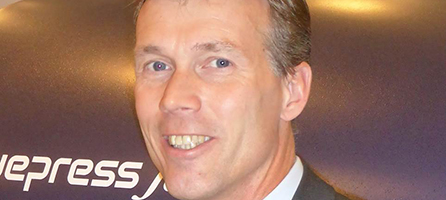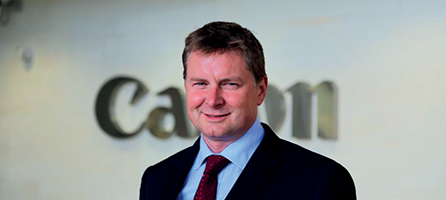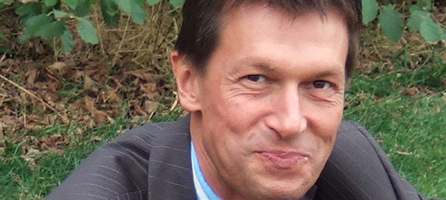
Stuart Cole, Marketing manager, Hybrid Services
Mimaki’s current wide format flatbed product range sits firmly in the top level of the market when it comes to innovation, output quality and environmental considerations. The company sets its stall by delivering products that meet the demands of its customers—the Mimaki JFX200 came about as a response to specific requests for an 8´ x 4´ flatbed (to suit the UK and Irish market) and that utilised all the cutting edge technological benefits from the range-topping JFX500 in a highly competitively priced package.
Both machines rely on using the very latest cold-cure LED UV technology to cure the inks. LED UV curing printers are vastly cheaper to run, offer significant environmental and performance benefits over machines that use traditional metal halide lamps and deliver a solution that allows print professionals to really leverage all the advantages of direct to substrate printing.

The technological benefits of LED UV curing over using traditional lamps ensure their investment is maximised”
Companies investing in wide format flatbed printers are typically looking at improving their process—be it bringing this sort of work in-house or replacing a workflow that is under-performing. The technological benefits of LED UV curing over using traditional lamps ensure their investment is maximised—opening up new materials (cold cure technology means heat sensitive materials present no issues), driving a faster workflow (it is not just about printing direct to substrate and cutting out a process; an LED UV curing printer will take no time to heat up or cool down, so more of the working day is spent printing), delivering more creative effects (Mimaki sports white and clear varnish on its machines) and ultimately, providing more opportunities to say ‘yes’ to a customer and win or retain their business!
With innovation at its heart, Mimaki continues to launch new and exciting products in this sector. Having led the way with LED UV curing—the product range now includes roll-to-roll wide format and the hugely popular small format UJF flatbed printers—it is fair to say it is been responsible for a significant number of the technological advancements the industry has already seen.
Breaking barriers

Martijn Van Den Broek, European product manager, wide format, Screen Europe
These are exciting times in an increasingly competitive wide format industry. It seems that every month a new technological barrier is broken that delivers new levels of performance and new opportunities for PSPs.
Technology has evolved on many fronts: the latest printheads deliver higher quality than ever before; ink gamut has widened; the ability to handle heavy pigment digital white without nozzle blocking is a reality; machine speeds are breaking new barriers; and reliability features such as Intelligent Nozzle Mapping ensure PSPs meet tight deadlines.
The market wants the best quality at the best speed and the highest level of uptime. Plus they want the highest level of flexibility from a single machine to produce the widest range of added-value products. The new developments and the lucrative opportunities they open up are in turn ramping up competition and, not surprisingly, driving down print costs in some areas. As a result PSPs are looking to diversify and offer their customers a range of printed products.

It seems that every month a new technological barrier is broken that delivers new levels of performance and new opportunities for PSPs”
Latest developments in the capabilities of inkjet wide format printing are opening up new speciality opportunities for PSPs to enable them to stay ahead of the game and ahead of growing competition. Investing in the right latest print technology enables companies to produce a wider range of products on the widest range of hard and flexible materials for their customers than ever before with just a single machine. Alongside stunning display graphics, wall coverings, décor and POS products, companies can also produce high-value products such as relief prints, complex multilayer day/night backlits, creative lenticulars, and vehicle graphics.
As wide format technology improves, which in turn drives flexibility, companies in-vesting in the latest generation of machines are getting a lot for their money which helps keep them ahead in an increasingly competitive market.
Need for niche

Dominic Fahy, business group manager display graphics systems and imaging supplies director, Canon UK
According to InfoTrends, the wide format market is expected to grow from £19.3bn (in 2013) to £22.3bn by 2018. And, while flatbed technologies are tools for this growth, what I believe will drive further technological advancement, as it has to date, is the creativity of those using it. The Arizona, for example, has seen a number of developments over the years to cater to customer demand for quicker turnaround times, faster production speeds, improved quality and more diverse applications (such as decorative elements possible with white ink and varnish capabilities). It therefore stands to reason that this will be where the next ‘big’ developments in this field will originate. And we, as a leading flatbed manufacturer, need to continue supporting this creativity and help to push the boundaries of what is possible.
We have seen great shifts in recent years from the more traditional wide format print applications to very niche applications like stained glass windows, flat-pack furniture and even pinball machines (as showcased on-stand at Sign and Digital UK). As flatbed technology becomes more mainstream, it will filter into even more specialist areas and we will need to develop our technology range further to meet the needs of the printers, designers or manufacturers behind the creative concepts.

We have seen great shifts in recent years from the more traditional wide-format print applications to very niche applications like stained glass windows, flat-pack furniture and even pinball machines”
To help inspire this creativity we have applications specialists who work with customers to help enable and support the creation of specific applications and get the most out of their system, as well as application guides such as the Arizona ‘Look Book’ which features a wealth of ‘recipes’ for successful wide format flatbed output. We believe these initiatives empower our customers to talk more confidently to their own customers and, subsequently help to open up new markets.
Ultimately, the opportunities to produce exciting and innovative wide format output efficiently and cost-effectively are greater than ever before. The companies that understand the true capabilities of flatbed technology are the ones that will reap the benefits, and we always aim to be a trusted partner that champions this with leading technology and an extensive support network.
Versatility is key

Marc Verbiest, International public relations manager, EFI
Ever since the early possibilities some 15 years ago when UV-curable inks enabled cost-effective and reliable direct printing to rigid materials for the first time, flat-bed printing has continued to rise in popularity throughout the display and sign-making segments. Early issues regarding adhesion and sheet stability have largely been overcome, with substrate manufacturers now providing surfaces that are designed to assist in providing durability to make this type of production both cost-effective and dependable.
However, in terms of the printing technology employed to cater for jobs where rigid materials are used, there is increasingly a desire for versatility among sign-makers and display producers. Many now want the option of being able to use just one machine for both roll-fed and flat-bed production. For many, printing direct to sheets might represent the bulk of the work-load for a business, but the ability for a fast change-over to enable production onto flexible materials adds another level of flexibility to an investment into wide-format printer.
Always present in flat-bed printers has been their ability to produce work quickly and efficiently with minimal intervention. With higher speeds and greater variability now be-coming essentials for many users, technologies are now able to adopt easily the accommodation of today’s workflow requirements. Regardless of budget, there are now devices available that can produce high-end work to a consistent standard, enabling businesses to optimise the applications that can be produced across a broad selection of materials.

Always present in flat-bed printers has been their ability to produce work quickly and efficiently with minimal intervention”
From EFI’s perspective, the company has covered all bases in its wide-format and VUTEk portfolios regarding its flat-bed technology so that companies of all sizes can benefit from being able to print direct to a growing number of substrates. Its LED printers are increasing in popularity both for their ability to reduce energy costs and because traditionally difficult materials can be used without fear of buckling, compromising adhesion or damaging the media surface.
Additionally, EFI is the only manufacturer that has in its portfolio flat-bed printers with a full 3.2m width, and this is vital for the many companies that want to print continuous boards across the long side of the material. Driven by Fiery XF proServer, which is part of the EFI Productivity Suite, this ensures consistency and colour accuracy as well as high throughput speeds.
Flat-bed printing is certain to continue to grow as an important segment within the wide-format arena. Its incorporation into a print-to-cut workflow also means that complex point-of-sale structures, creased and folded applications and irregular shapes can all be generated.
Your text here...